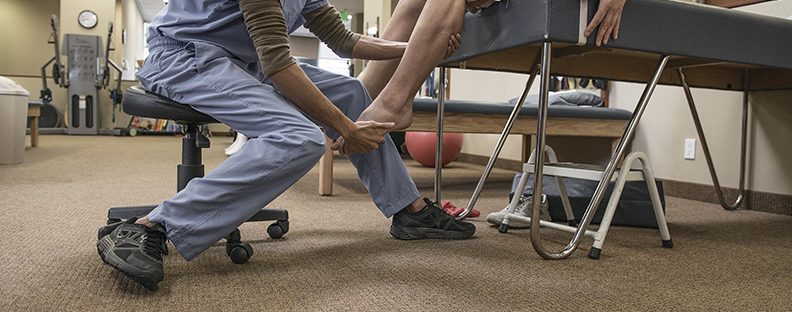In honor of National Physical Therapy Month, we sat down with Carly Costanza, physical therapist with Excellus BlueCross BlueShield, to learn more about the benefits of physical therapy.
What can you tell us about the history of physical therapy?
(Costanza) Physical therapy has been around since ancient times! Many cultures used exercise, water, movement and massage as therapeutic treatment for a variety of ailments. The earliest documentation of the scientific profession of physiology – or physical therapy – dates back to Per Henrik Ling, the “father of Swedish gymnastics,” who founded Stockholm’s Royal Central Institute of Gymnastics in 1813 for manipulation and exercise. His methods of medical gymnastics influenced later institutions and systems.
Reed College in Portland, Oregon was one of the first institutions in the United States to adopt physical therapy as an area of study in 1914. When Walter Reed General Hospital opened in 1909, the Surgeon General of the Army determined physical therapy should be included in patient care. Mary McMillan was appointed to start the United States’ first physical therapy program there, training “reconstruction aides.”
Given that physical therapy was primarily a female profession at that time, McMillian became known as “the mother of physical therapy.” In 1921, she organized the first physical therapy organization in the US, the American Women’s Physical Therapeutic Association, currently the American Physical Therapy Association.
What does a physical therapist do?
Physical therapists play a very important role in providing rehabilitation and habilitation services, as well as prevention and risk reduction training. They are movement experts who improve quality of life through prescribed exercise, hands-on care and patient education. Physical therapists treat people of all ages and abilities and empower them to actively take part in their own care.
In 2019, it was estimated that 258,200 physical therapists were practicing in the US and that number is expected to grow 18 percent by 2029. All states require physical therapists to be licensed and new graduates now receive a doctoral (DPT) degree and must pass a national licensing exam before they can practice.
The American Physical Therapy Association classifies 19 distinct specialty sections ranging from Sports Rehabilitation to Cardiovascular/Pulmonary to Research. Physical Therapists may also be involved in other areas of health and wellness.
Physical therapists work closely with a team of other medical professionals, like doctors, nurses, and occupational therapists to support patients, depending on the care setting in which they are working. Physical therapists work in various care settings:
- Outpatient clinics
- Private practices
- Hospitals
- Rehabilitation Facilities
- Nursing homes
- Patients’ homes
- Sports and fitness facilities
- Schools
- Occupational settings
- Government agencies
- Research facilities
Why Physical Therapy?
Depending on the reason for treatment, the benefits of physical therapy include:
- Improved mobility and maximum movement
- Recovery from injury or trauma
- Recovery from stroke or paralysis
- Fall prevention
- Improved balance
- Management of age-related medical problems
- Personalized care that meets your needs
- Care where you need it
- Participation in one’s recovery
- Pain management with reduced need for opioids
- Surgery avoidance
To learn more about physical therapy and how it may benefit you visit: Choose PT!
Did you know?
Excellus BCBS has a team of physical therapists that works within the Utilization Management department.
References:
- https://www.physiotherapy-treatment.com/history-of-physical-therapy.html
- https://www.bls.gov/ooh/healthcare/physical-therapists.htm#tab-6
- https://www.choosept.com/Default.aspx
- https://www.medicalmuseum.mil/index.cfm?p=media.news.article.2019.innovation_leads_to_rehabilitation
- https://www.burke.org/blog/2015/10/10-reasons-why-physical-therapy-is-beneficial/58
- https://www.academia.edu/23158921/PER_HENRIK_LING_PIONEER_OF_PHYSIOTHERAPY_AND_GYMNASTICS
- https://www.news-medical.net/health/Physiotherapy-History.aspx
- Healthy Snacking Tips from a Football Party Veteran - February 2, 2022
- Why I Will Be in Line for A Flu Shot This Year - February 21, 2021
- Small Steps to Prevent Big Falls: Protecting Older Adults from Injury - February 20, 2021


